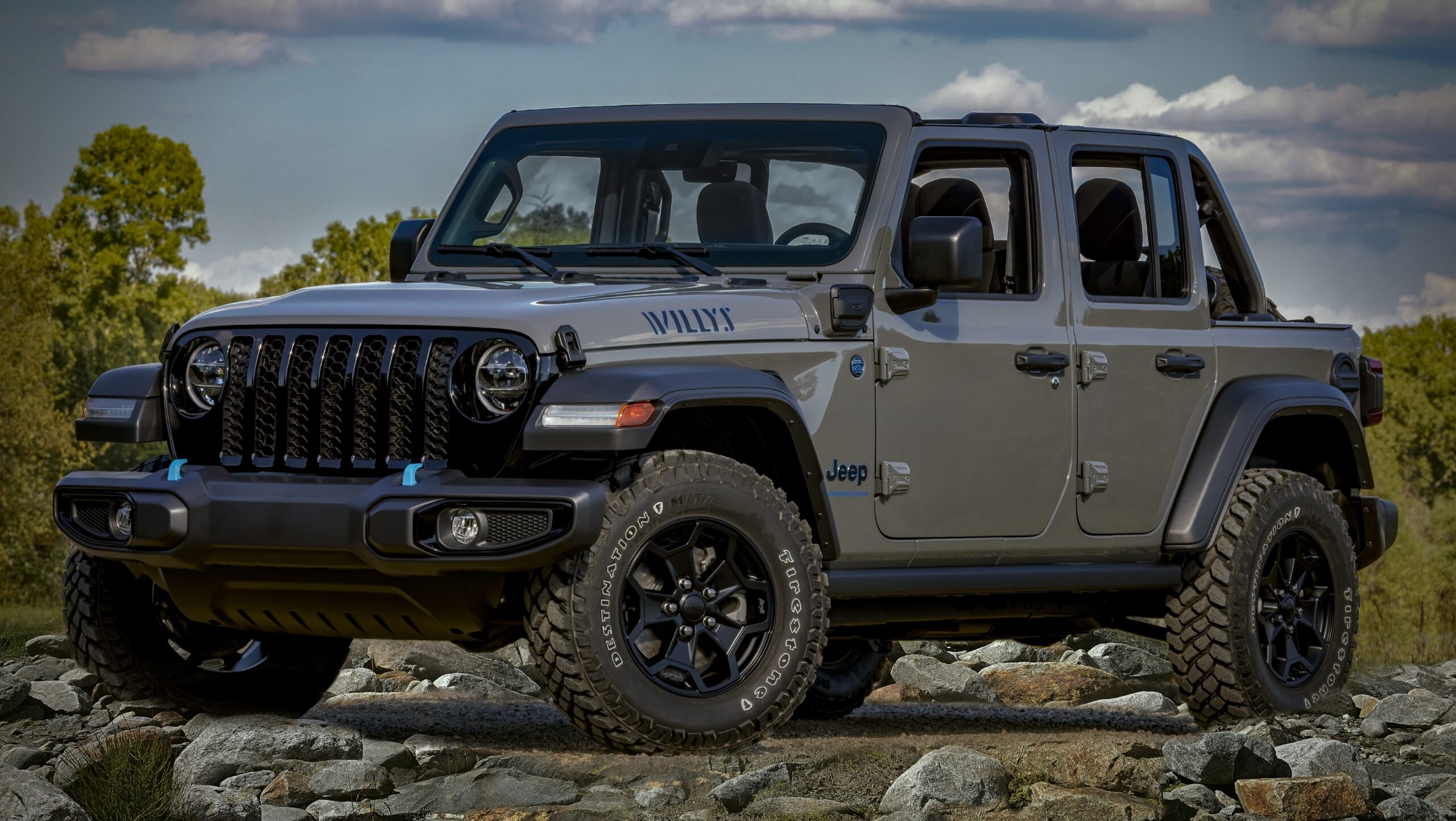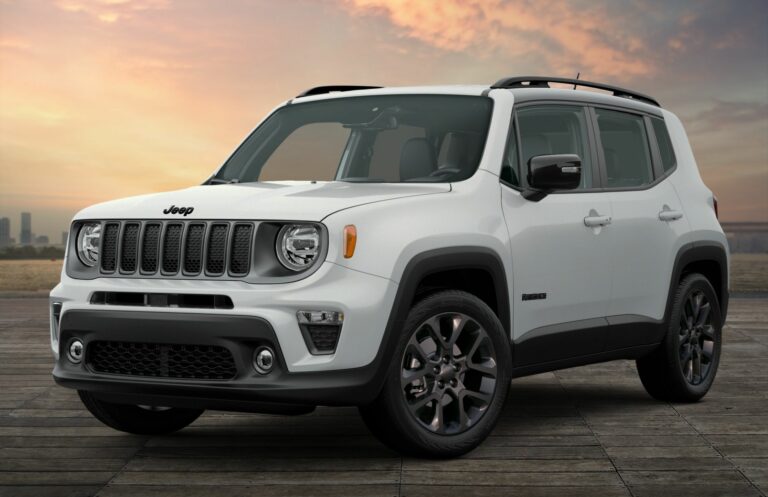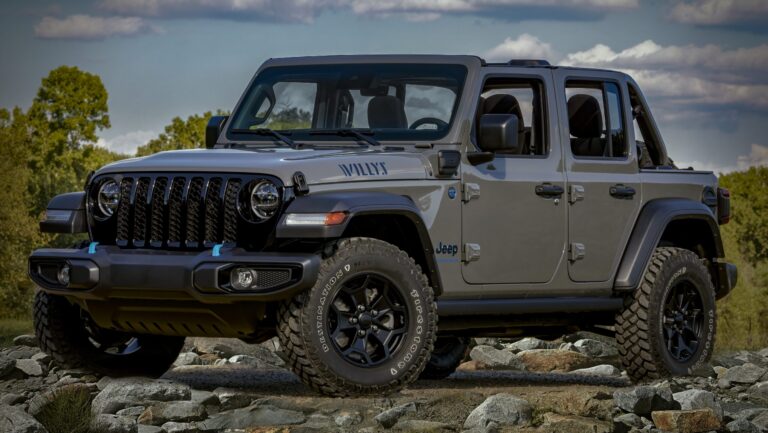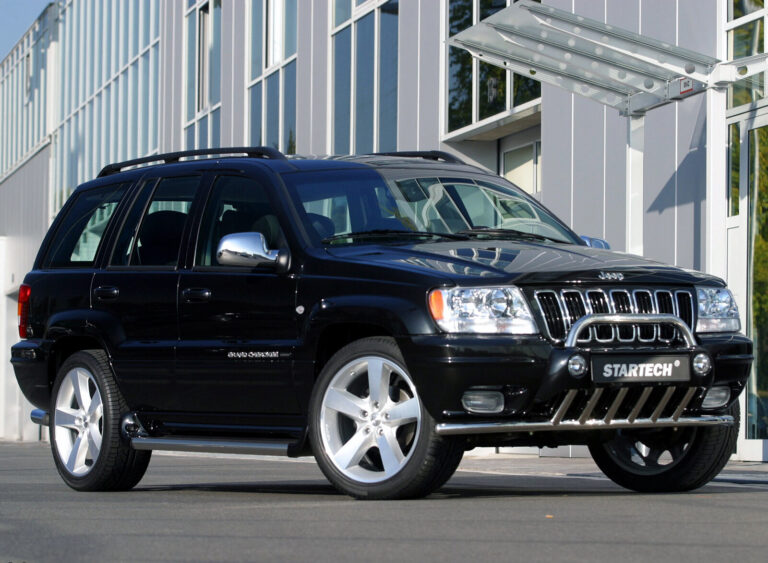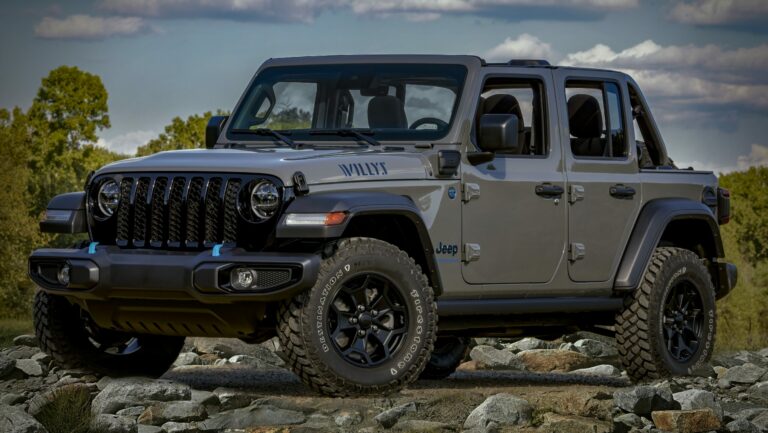Jeep 4.0 Crate Engine For Sale: Breathing New Life into Your Off-Road Legend
Jeep 4.0 Crate Engine For Sale: Breathing New Life into Your Off-Road Legend /jeeps.truckstrend.com
The Jeep 4.0-liter inline-six engine is more than just an internal combustion machine; it’s a legend. Revered for its bulletproof reliability, ample low-end torque, and straightforward design, it powered countless Jeep Cherokees (XJ), Wranglers (YJ, TJ), and Grand Cherokees (ZJ) for decades, earning a cult following among off-road enthusiasts and daily drivers alike. However, even legends eventually show their age. Years of hard trails, demanding commutes, or simply accumulated mileage can lead to a tired, worn-out engine.
When faced with a faltering 4.0L, Jeep owners often find themselves at a crossroads: rebuild the existing engine, swap in a used one, or invest in a Jeep 4.0 Crate Engine For Sale. This article delves deep into the world of 4.0-liter crate engines, providing a comprehensive guide for anyone considering this path to revitalize their beloved Jeep. From understanding what a crate engine is to navigating the buying process, installation, and optimization, we’ll cover everything you need to know to make an informed decision and get your Jeep roaring back to life.
Jeep 4.0 Crate Engine For Sale: Breathing New Life into Your Off-Road Legend
The Enduring Legacy of the Jeep 4.0 Liter Engine
Before diving into crate engines, it’s essential to appreciate why the 4.0L holds such a special place in automotive history. Developed by AMC (American Motors Corporation) and later produced by Chrysler, this straight-six engine debuted in 1987. Its design lineage can be traced back to earlier AMC engines, inheriting their robust architecture.
Key to its popularity were several factors:
- Torque Production: Its long stroke design provided impressive low-end torque, ideal for crawling over obstacles and navigating challenging terrain.
- Durability: Simple, sturdy components and a relatively low-stress design contributed to its reputation for lasting hundreds of thousands of miles with proper maintenance.
- Serviceability: Its inline configuration allowed for easy access to components, making maintenance and repairs straightforward for shade-tree mechanics and professionals alike.
- Versatility: It powered various iconic Jeep models, including the venerable XJ Cherokee, the quintessential TJ Wrangler, and the more luxurious ZJ Grand Cherokee, proving its adaptability across different platforms.

Even today, decades after its production ceased, the demand for this engine remains incredibly high, primarily for replacements and upgrades in the vast fleet of existing Jeeps.
Why Choose a Crate Engine?
When your Jeep’s 4.0L finally gives up the ghost, you have options. A used engine from a junkyard is cheap but comes with unknown history and potential issues. Rebuilding your existing engine can be cost-effective but is labor-intensive and requires specialized knowledge. This is where a crate engine shines.
A crate engine is a complete, pre-assembled engine unit, often shipped in a protective crate, ready for installation. Here’s why it’s a compelling choice:
- Guaranteed Quality and Reliability: Crate engines, particularly remanufactured ones, are built to strict specifications, often exceeding original factory tolerances. They typically feature new or fully reconditioned internal components (pistons, rings, bearings, camshafts, etc.) and fully machined blocks and cylinder heads. This offers a level of reliability and peace of mind a used engine simply cannot.
- Time Savings: Instead of spending weeks or months on a rebuild, a crate engine dramatically reduces downtime. It arrives ready to drop in, significantly shortening the time your Jeep is out of commission.
- Performance Upgrades (Optional): Many suppliers offer crate engines with performance enhancements, such as stroker kits (e.g., 4.2L, 4.5L, 4.7L conversions), improved cylinder heads, or performance camshafts, providing a significant power boost over the stock 4.0L.
- Warranty: Perhaps the most significant advantage is the warranty. Reputable crate engine suppliers stand behind their products, offering warranties that can range from 12 months/12,000 miles to several years/unlimited mileage, protecting your investment.
- Completeness: While variations exist (long block vs. complete engine, discussed below), crate engines reduce the need to source numerous individual parts, simplifying the replacement process.
Types of Jeep 4.0 Crate Engines Available
The term "crate engine" encompasses a few different categories, each with its own characteristics:
- Remanufactured/Rebuilt Crate Engines: This is the most common type for the 4.0L. These engines are essentially used core engines that have been completely disassembled, inspected, cleaned, and rebuilt to original or improved specifications. Worn parts are replaced with new ones (pistons, rings, bearings, seals, gaskets), and major components like the block, crankshaft, and cylinder head are thoroughly machined and tested. They offer an excellent balance of cost, reliability, and performance.
- New Crate Engines (Rare): Truly "new" 4.0L crate engines are extremely rare and typically come from specialized aftermarket manufacturers. These are built from all-new castings and components. They command a premium price and are usually geared towards high-performance applications.
- Performance Crate Engines (Stroker Kits): For those seeking more power, many remanufacturers offer "stroker" versions of the 4.0L. These engines use a crankshaft with a longer stroke and often larger pistons to increase displacement, commonly to 4.2L, 4.5L, 4.6L, or even 4.7L. This results in significant gains in horsepower and, more importantly for Jeeps, torque. They often include upgraded components like performance camshafts, improved cylinder heads, and reinforced bottom ends.
- Long Block vs. Complete Engine:
- Long Block: This is the most common configuration. It includes the engine block, crankshaft, connecting rods, pistons, camshaft, cylinder head(s), and valve train, all assembled. It typically does not include the intake manifold, exhaust manifold, water pump, oil pan, valve cover, ignition system, fuel system, or accessories (alternator, power steering pump, AC compressor). These components must be transferred from your old engine or purchased new.
- Complete Engine: A complete crate engine includes everything a long block does, plus many of the external components like the intake manifold, exhaust manifold, throttle body, sensors, fuel injectors, distributor, water pump, and sometimes even the oil pan and valve cover. While more expensive, they offer maximum convenience and reduce the need to transfer or buy ancillary parts.
Key Considerations When Buying a Jeep 4.0 Crate Engine
Purchasing a crate engine is a significant investment. Careful consideration of these factors will ensure you get the right engine for your Jeep and avoid potential headaches:
-
Vehicle Compatibility (Year Specifics): This is paramount. The 4.0L engine underwent several revisions throughout its production run, especially concerning sensor locations, accessory mounting points, and cylinder head designs.
- Renix vs. HO: Early models (1987-1990) used the Renix fuel injection system, while later models (1991-2006) used the High Output (HO) system. These systems have different sensor requirements and often different cylinder heads and intake manifolds. Ensure your crate engine matches your vehicle’s year and fuel injection system.
- Distributor vs. Coil-on-Plug: Later TJ Wranglers (2000-2006) moved from a distributor-based ignition to a coil-on-plug system. The cylinder head and engine management will differ.
- Automatic vs. Manual Transmission: While the engine block itself is largely the same, bellhousing bolt patterns and crankshaft pilot bushing designs can vary slightly. Always confirm compatibility with your transmission.
-
Emissions Requirements: Check your local and state emissions regulations. Some performance crate engines (especially strokers) may not be street legal in all areas or may require specific modifications to pass emissions tests.
-
Warranty: Read the warranty terms carefully. Understand its duration (miles/years), what it covers (parts, labor, towing?), and what voids it (e.g., improper installation, overheating, unauthorized modifications). A good warranty from a reputable supplier is invaluable.
-
Reputation of the Seller/Builder: Purchase from a well-established company with a strong track record and positive customer reviews. Ask about their building process, quality control, and testing procedures.
-
Budget and Inclusions:
- Engine Cost: Prices vary significantly based on type (remanufactured, stroker), completeness (long block, complete), and supplier.
- Shipping Costs: Crate engines are heavy; shipping can be a substantial expense.
- Ancillary Parts: Remember that a long block will require transferring or purchasing many components from your old engine (intake, exhaust, sensors, accessories, wiring harness, etc.). Factor these costs into your budget.
- Installation Cost: If you’re not doing it yourself, get quotes from reputable shops.
-
Core Charge: Most remanufactured crate engines require a core charge, which is refunded when you return your old engine. Ensure your old engine is suitable as a core (not cracked, severely damaged, etc.) to get your deposit back.
The Installation Process: What to Expect
Installing a crate engine is a significant mechanical undertaking.
-
DIY vs. Professional:
- DIY: Possible for experienced mechanics with proper tools (engine hoist, stand, transmission jack, specialized wrenches). It saves labor costs but requires time, patience, and a good service manual.
- Professional: Recommended if you lack experience, tools, or time. A reputable shop will have the expertise to handle potential issues and ensure proper installation, often offering a warranty on their labor.
-
Tools and Equipment: Beyond basic hand tools, you’ll need an engine hoist, engine stand, transmission jack, torque wrenches, fluid drain pans, and possibly specialized sensor sockets.
-
Ancillary Parts and Fluids:
- New is Best: While some parts can be transferred from your old engine, consider replacing wear items like the water pump, thermostat, hoses, belts, motor mounts, spark plugs, and all fluids (oil, coolant, power steering, transmission).
- Sensors: Many crate engines do not include sensors. Ensure you have working replacements or transfer them carefully. Compatibility issues with certain sensors (e.g., crank position sensor, cam position sensor) are common causes of post-install headaches if not addressed.
- Gaskets and Seals: Ensure all necessary gaskets and seals are included or purchased separately for components you are transferring.
-
Break-in Procedure: This is CRITICAL for the longevity of your new engine. Follow the manufacturer’s specific break-in instructions precisely. This typically involves varying RPMs, avoiding prolonged high RPMs or heavy loads for the first few hundred miles, and changing the oil and filter after a specified mileage. Skipping this step can drastically shorten the engine’s life.
-
Common Challenges:
- Wiring Harness Compatibility: Even within the same model year, minor variations can exist. Be prepared to troubleshoot or adapt.
- Sensor Compatibility: As mentioned, ensure all sensors match your vehicle’s ECU.
- Vacuum Lines: Jeep 4.0s have numerous vacuum lines; ensure they are all connected correctly and free of leaks.
- Fluid Leaks: Double-check all connections and seals after installation.
Optimizing Your New 4.0 Crate Engine
Once your new crate engine is installed and broken in, you can consider optimizing its performance and ensuring its longevity.
-
Performance Upgrades:
- Intake and Exhaust: A high-flow air intake and a performance exhaust system can help your engine breathe better, potentially adding a few horsepower and improving throttle response.
- Throttle Body: Upgrading to a larger throttle body can improve airflow.
- Fuel Injectors: Newer, more efficient fuel injectors can improve atomization and combustion, especially if you’ve opted for a stroker engine.
- ECU Tuning: For stroker engines or heavily modified setups, a custom ECU tune is almost mandatory to optimize fuel delivery and ignition timing for the increased displacement and airflow.
- Cooling System: The 4.0L can run hot, especially in Jeeps used for off-roading or towing. Upgrade to an all-aluminum radiator, high-flow water pump, and a high-quality fan clutch to keep temperatures in check.
-
Maintenance Schedule: Stick to a rigorous maintenance schedule. Use high-quality synthetic or semi-synthetic oil, change filters regularly, and monitor fluid levels. Regular checks of belts, hoses, and cooling system components will prevent minor issues from becoming major problems.
Price Table: Typical Jeep 4.0 Crate Engine Options
Please note: Prices are highly variable based on the supplier, specific components included, market demand, and core charge policies. These are general estimates as of late 2023 / early 2024.
| Engine Type | Horsepower (HP) | Torque (lb-ft) | Typical Price Range ($) | Warranty (Years/Miles) | Key Features & Inclusions |
|---|---|---|---|---|---|
| Remanufactured Long Block | 190 (Stock) | 220 (Stock) | $2,500 – $4,000 | 1-3 years / 12k-Unlimited | Block, crank, rods, pistons, cam, head, valve train. No external accessories. |
| Remanufactured Complete | 190 (Stock) | 220 (Stock) | $3,500 – $5,500 | 1-3 years / 12k-Unlimited | Long block plus intake, exhaust, water pump, sensors (some). |
| 4.2L Stroker Long Block | 210-230 | 260-280 | $3,800 – $5,500 | 1-3 years / 12k-Unlimited | Increased displacement, often performance cam, upgraded components. |
| 4.7L Stroker Long Block | 240-270+ | 280-320+ | $4,500 – $7,000+ | 1-3 years / 12k-Unlimited | Significant power gains, often requires ECU tune, upgraded valvetrain. |
Note: Prices do not include shipping, core charge, or installation labor. Always get a detailed quote from your chosen supplier.
Frequently Asked Questions (FAQ)
Q1: What’s the difference between a long block and a complete engine?
A1: A long block includes the assembled engine block, crankshaft, pistons, rods, camshaft, and cylinder head(s). A complete engine includes all of that plus external components like the intake manifold, exhaust manifold, sensors, throttle body, and sometimes accessories, making it closer to a "drop-in" solution.
Q2: Can I install a 4.0L crate engine myself?
A2: Yes, if you have significant mechanical experience, the right tools (engine hoist, stand, etc.), and a good service manual. It’s a complex job, and improper installation can void warranties or cause immediate problems. If unsure, professional installation is recommended.
Q3: Do I need to tune my ECU after installing a new engine?
A3: For a stock replacement remanufactured engine, a tune is generally not required, as your vehicle’s existing ECU should adapt. However, for "stroker" engines (e.g., 4.2L, 4.5L, 4.7L), a custom ECU tune is highly recommended, and often necessary, to optimize performance, fuel economy, and ensure proper running.
Q4: What’s a "stroker" engine, and is it worth it?
A4: A stroker engine is a modified 4.0L where the crankshaft’s stroke is increased, and often larger pistons are used, to boost the engine’s displacement (e.g., from 4.0L to 4.5L or 4.7L). This results in significant gains in horsepower and, more importantly for Jeeps, low-end torque. It’s worth it if you desire more power for off-roading, towing, or simply a more spirited driving experience, and are willing to invest more in the engine and potentially an ECU tune.
Q5: How long do these crate engines typically last?
A5: A properly installed and maintained remanufactured 4.0L crate engine can easily last 150,000 to 250,000 miles or more, similar to the original factory engines. Following the break-in procedure and adhering to regular maintenance schedules are crucial for maximizing its lifespan.
Q6: Are there any common issues to watch out for with new crate engines?
A6: While rare with reputable suppliers, potential issues include initial leaks (due to seals or gaskets settling), sensor compatibility problems (especially if transferring old sensors), or minor manufacturing defects. Always follow the break-in procedure, monitor fluids and temperatures closely, and address any warning signs immediately. A good warranty and responsive customer support from the supplier are key.
Conclusion
The Jeep 4.0-liter engine is a testament to robust engineering, a true workhorse that has powered generations of iconic off-road machines. When age or wear finally takes its toll, investing in a Jeep 4.0 Crate Engine For Sale offers a compelling solution to breathe new life into your beloved Jeep. Whether you opt for a reliable stock replacement or a powerful stroker, a crate engine provides the peace of mind of a fresh, warranted powertrain.
By carefully considering your vehicle’s specific needs, understanding the different types of engines available, vetting suppliers, and meticulously planning the installation, you can ensure a successful and rewarding experience. With a new heart beating under its hood, your Jeep will be ready to tackle countless more miles and conquer new trails, continuing the legend for years to come.
